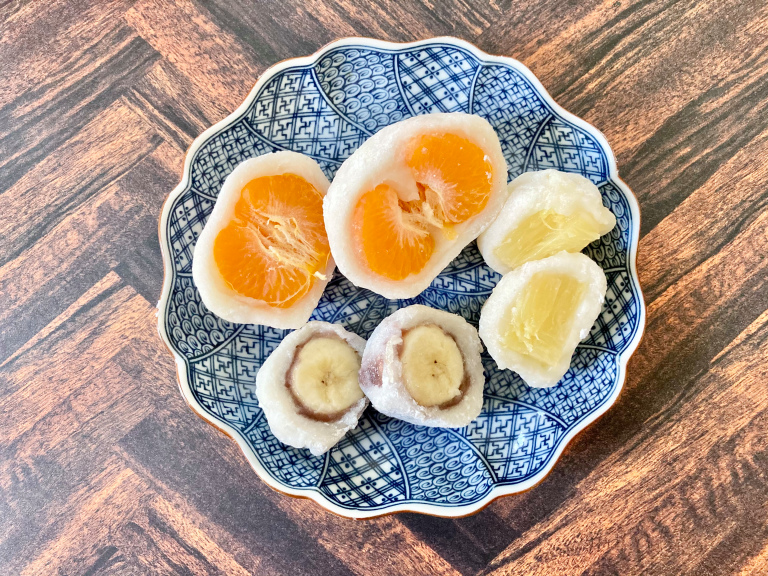

The kagami mochi sits on a stand called a sanpō ( Japanese: 三宝) over a sheet called a shihōbeni ( Japanese: 四方紅), which is supposed to ward off fires from the house for the following years. In addition, it may have a sheet of konbu and a skewer of dried persimmons under the mochi. Kagami mochi ( Japanese: 鏡餅), literally mirror rice cake, is a traditional Japanese New Year decoration, consisting of two round mochi cakes, the smaller placed atop the larger, with a daidai (a Japanese bitter orange) with an attached leaf set on top. Toasted mochi inflates to several times its original size, forming a crisp crust with a soft, chewy interior, and is especially popular in cold weather. Shaped into rectangles or circles, it hardens as it is cured and can then be cooked with red beans, vegetables or soups, or toasted on top of a stove.

It is also formed into a variety of confections and sweets. The pounding method is still frequently used in traditional Japanese restaurants and confectionaries, and sometimes in festivals and private homes.įresh mochi can be enjoyed immediately, dipped in soy sauce and sugar or coated with toasted soy bean powder ( kinako ( 黄粉, kinako)). Modern mochi is also made by machine, but it is claimed that mochi pounded in an usu tastes better than mochi that has been processed by an electric machine. The rice is cooked and then pounded it in a stone or wooden mortar, called an usu, until it becomes a soft, chewy paste. glutinosa or Oryza glutinosa) also called sticky rice, sweet rice, waxy rice, botan rice, mochi rice, and pearl rice, type of short-grained Asian rice that is especially sticky when cooked. Mochi is made with glutinous rice ( Oryza sativa var.


 0 kommentar(er)
0 kommentar(er)
